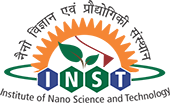Artemisinin is the most successful antimalarial drug against malaria caused by Plasmodium falciparum. Despite its tremendous success and popularity in malaria therapeutics, the molecular mechanism of artemisinin’s activity is still elusive. The activation of artemisinin, i.e., cleavage of the endoperoxide bond at the infected cell that generates radical intermediates and the subsequent chemical rearrangements, plays a key role in the antimalarial activities. In this work, adopting state-of-the-art computational techniques based on the spin-constrained density functional theory (CDFT) along with ab initio thermodynamics, we have investigated the activation of artemisinin by two different pathways, homolytic and heterolytic cleavage. The homolytic scission of the endoperoxide bond is further followed by subsequent chemical reactions that propagate via biradical intermediates. Here we report that the free energy of activation of artemisinin associated with the homolytic cleavage is less (21.77 kcal/mol) than the heterolytic cleavage (23.64 kcal/mol). The nonreductive homolytic cleavage of the endoperoxide bond is thermodynamically slightly favorable. Thus, the latter could occur in parallel with the heterolytic activation of the artemisinin.


Recent Comments
Hello world!
A WordPress CommenterInterdum luctus accu samus habitant error nostra nostrum
Fletch SkinnerInterdum luctus accu samus habitant error nostra nostrum
Chauffina CarrDoloremque velit sapien labore eius lopren itna
Hans DownBloke cracking goal the full monty get stuffed mate posh.
Fletch Skinner